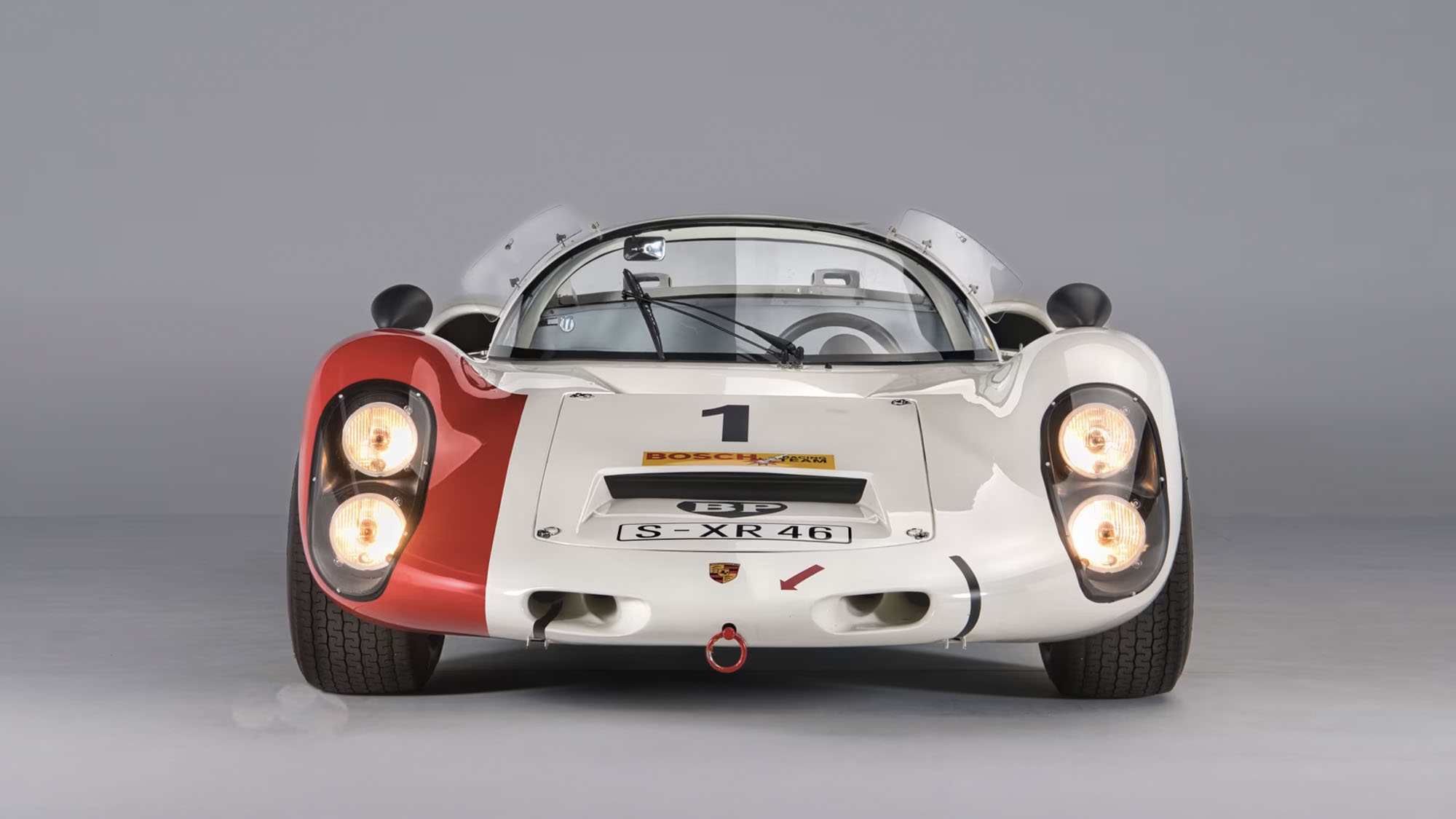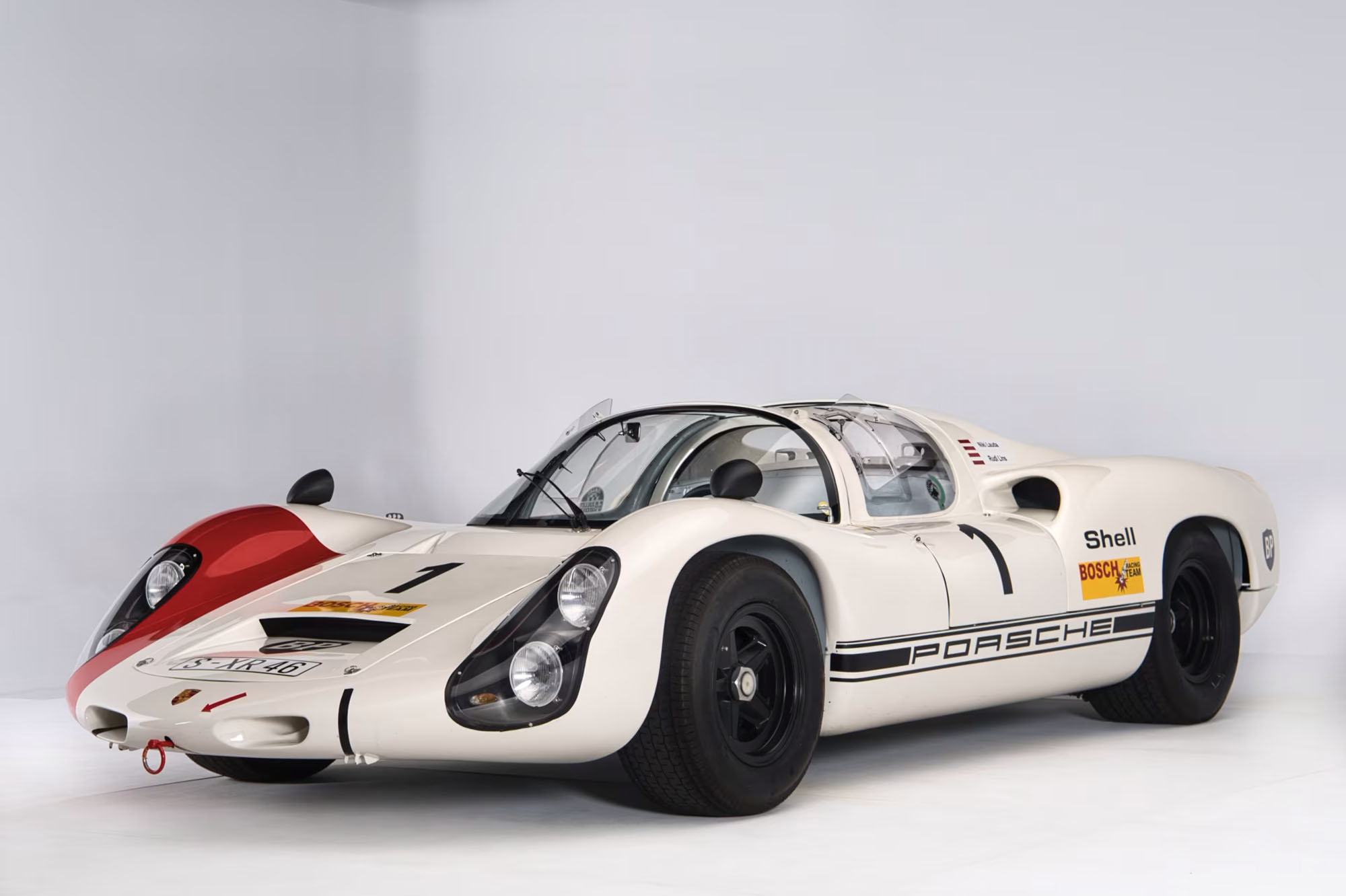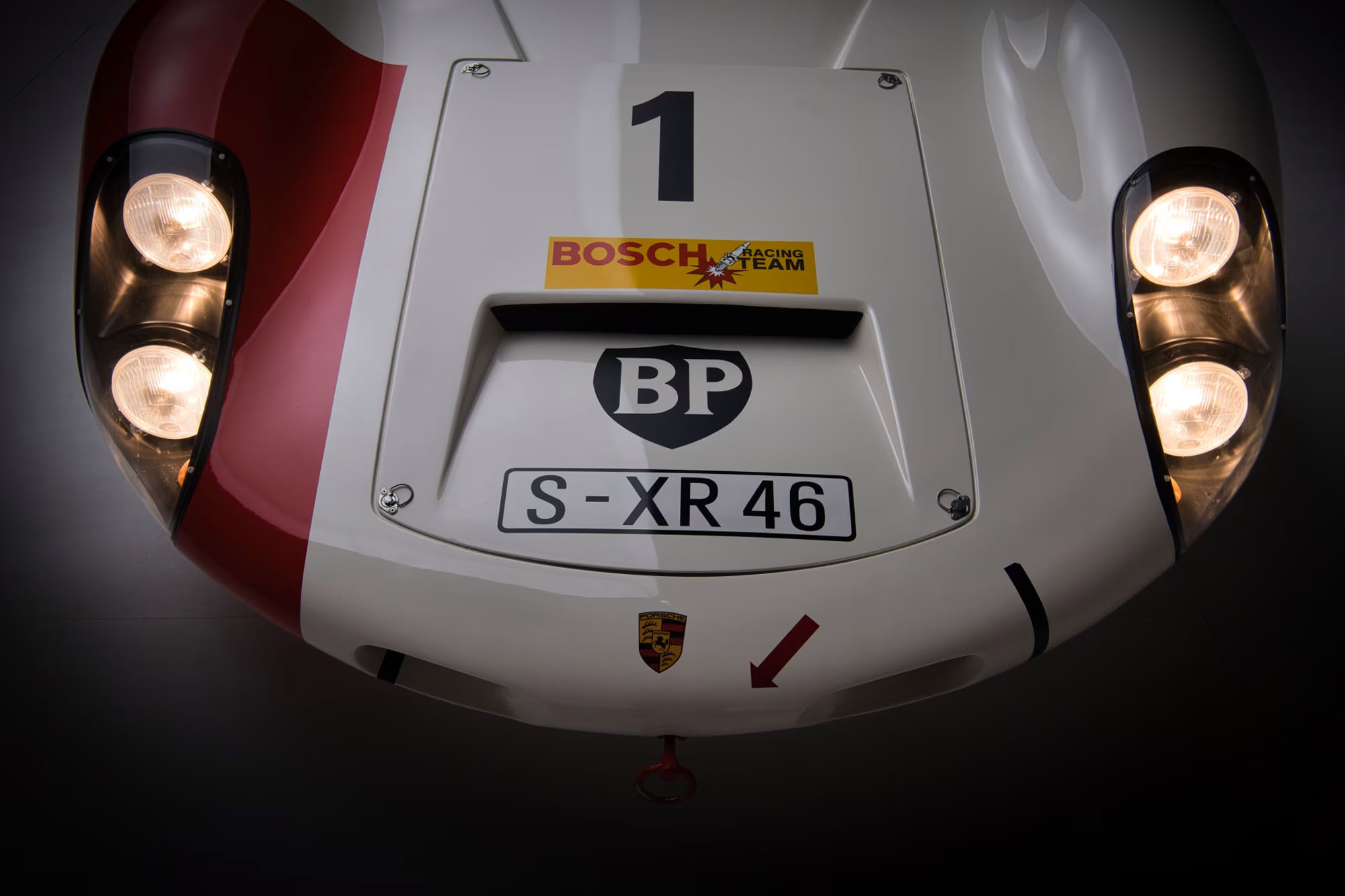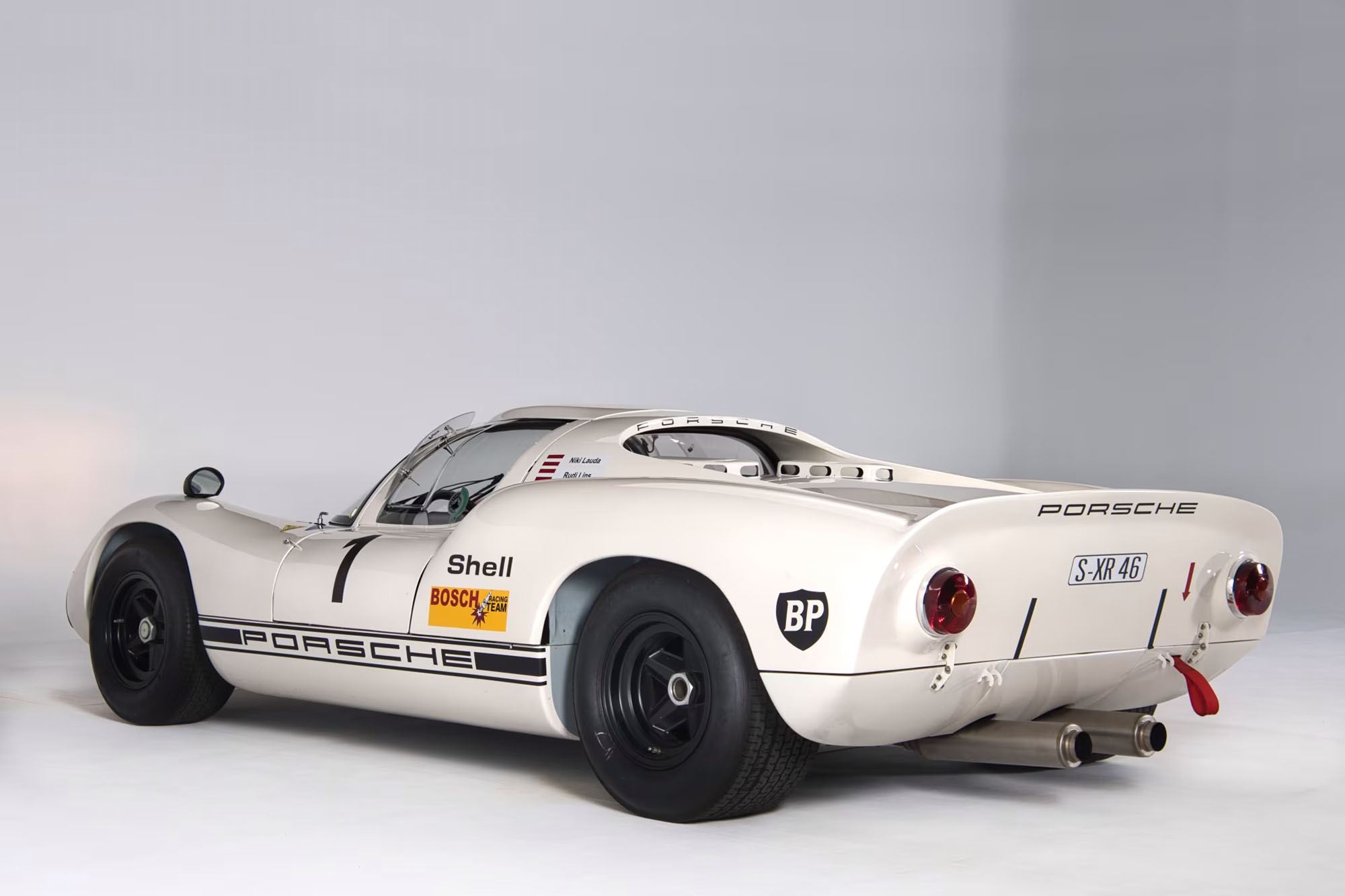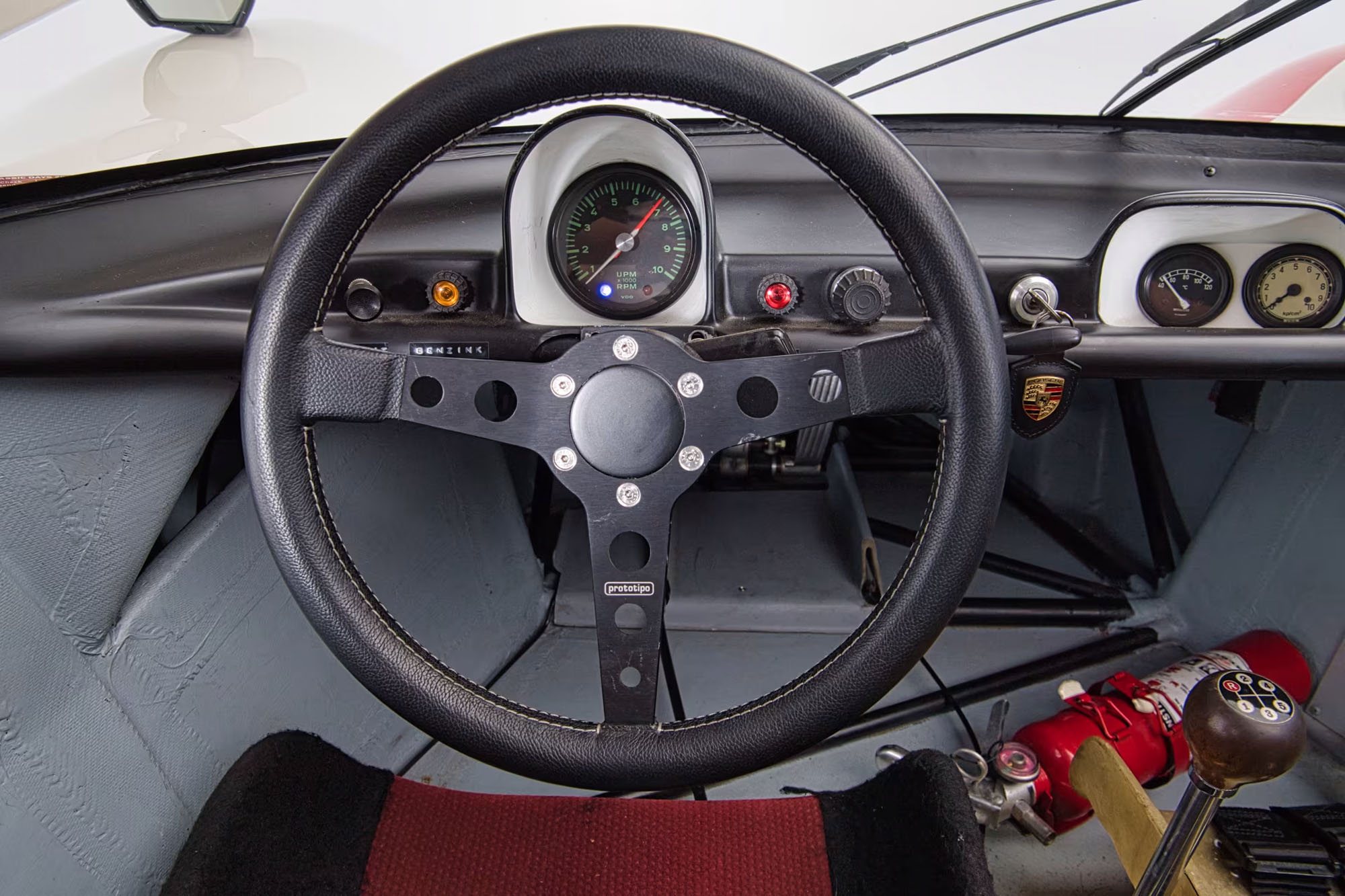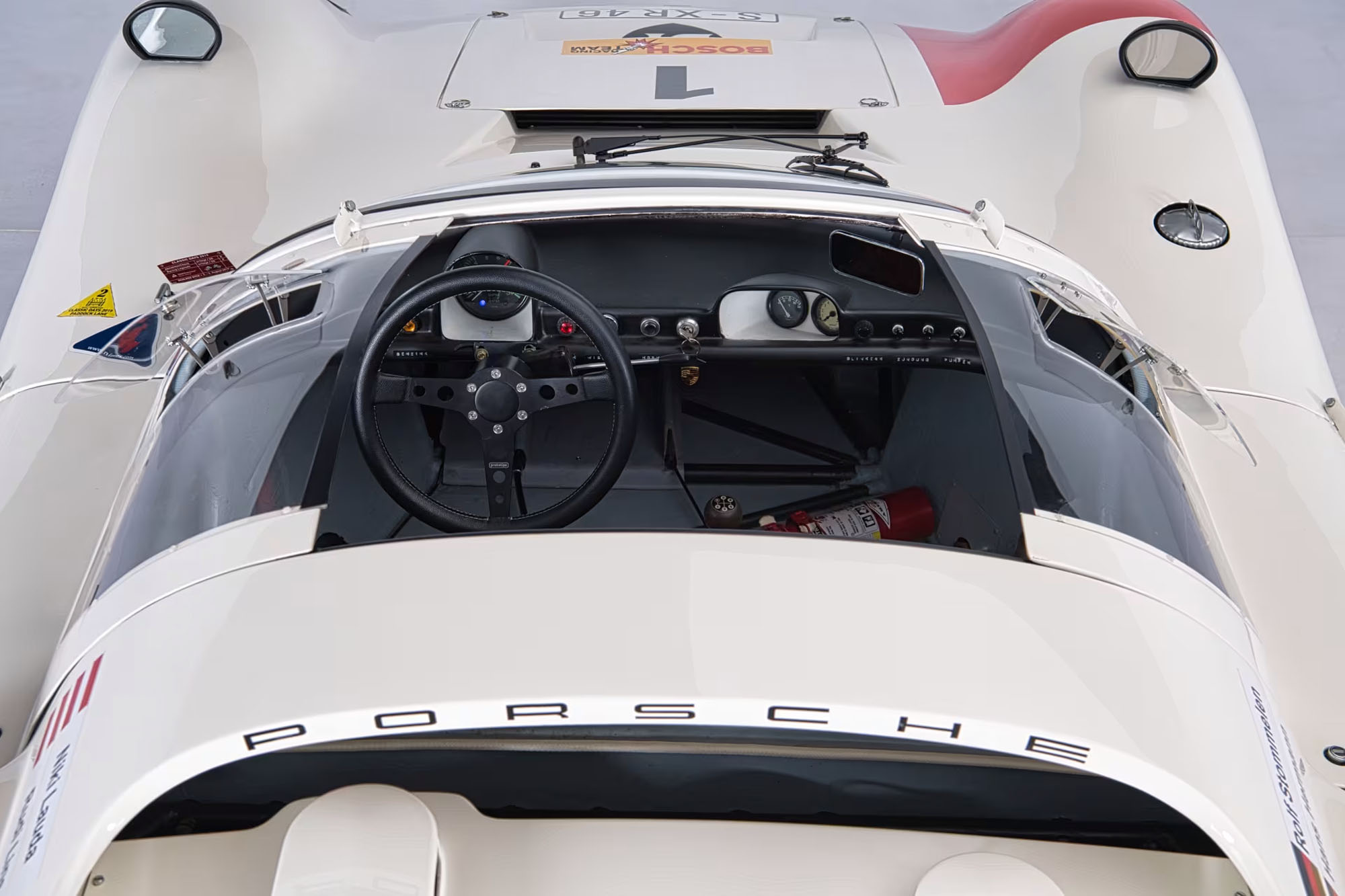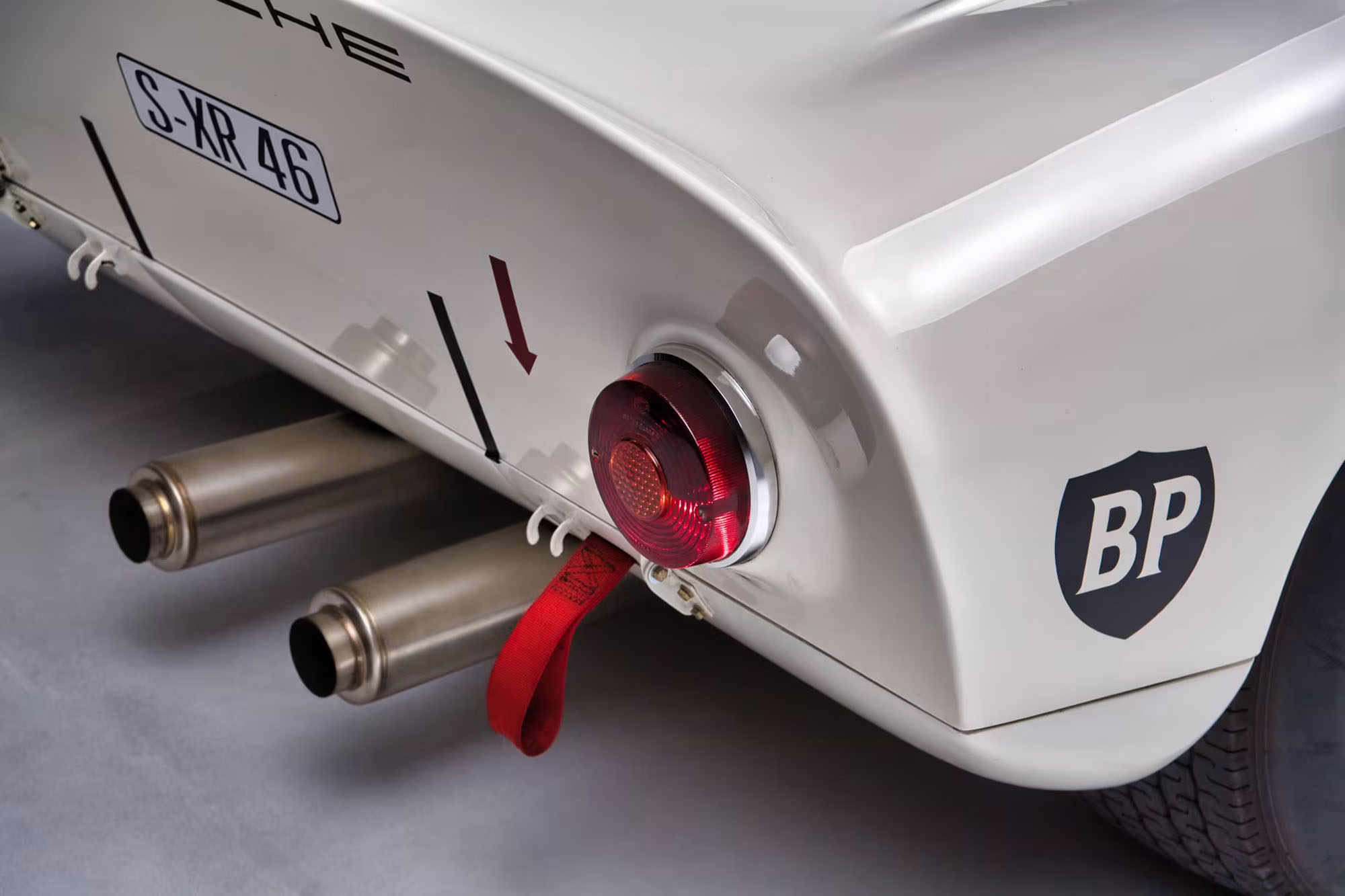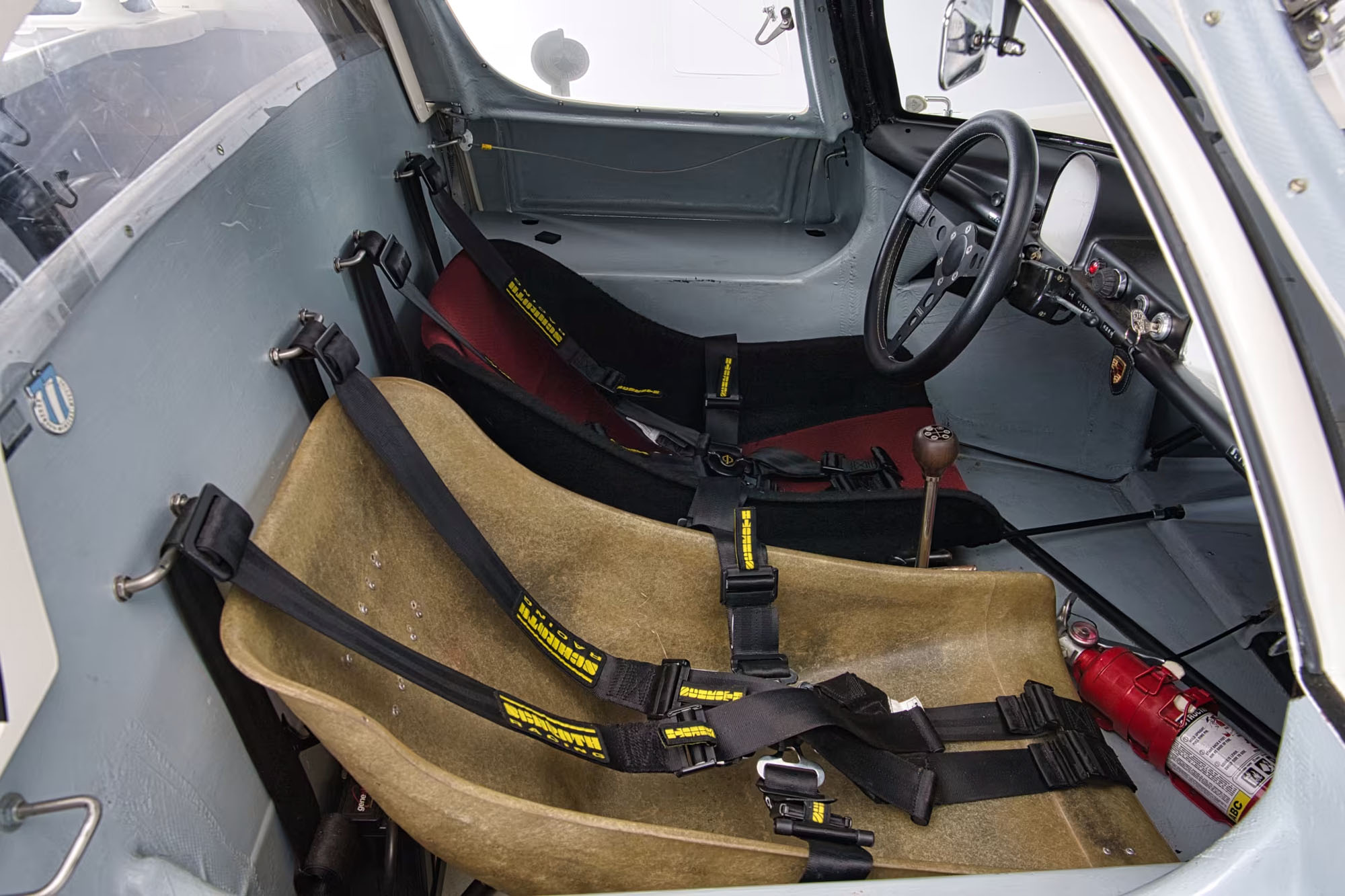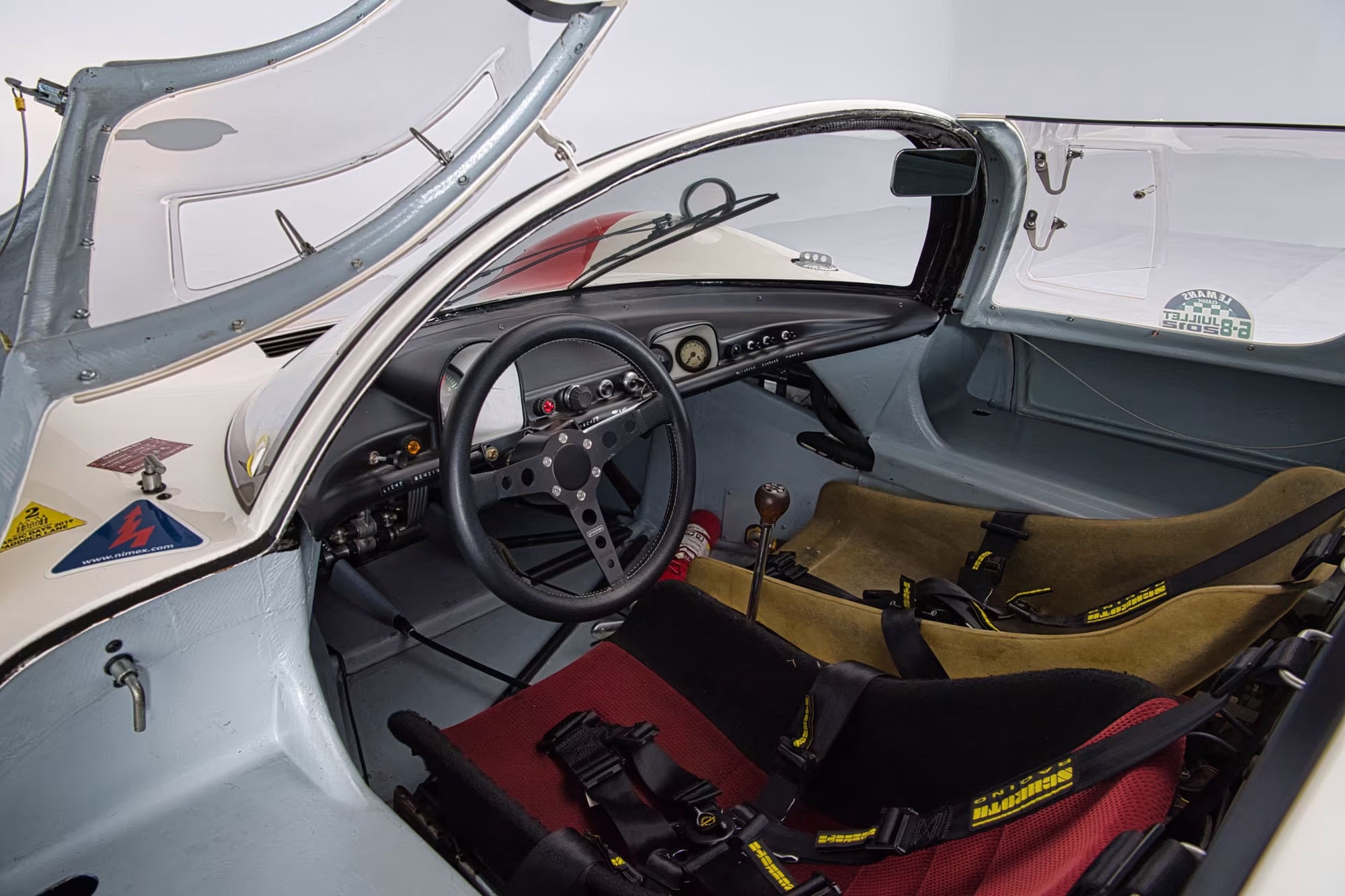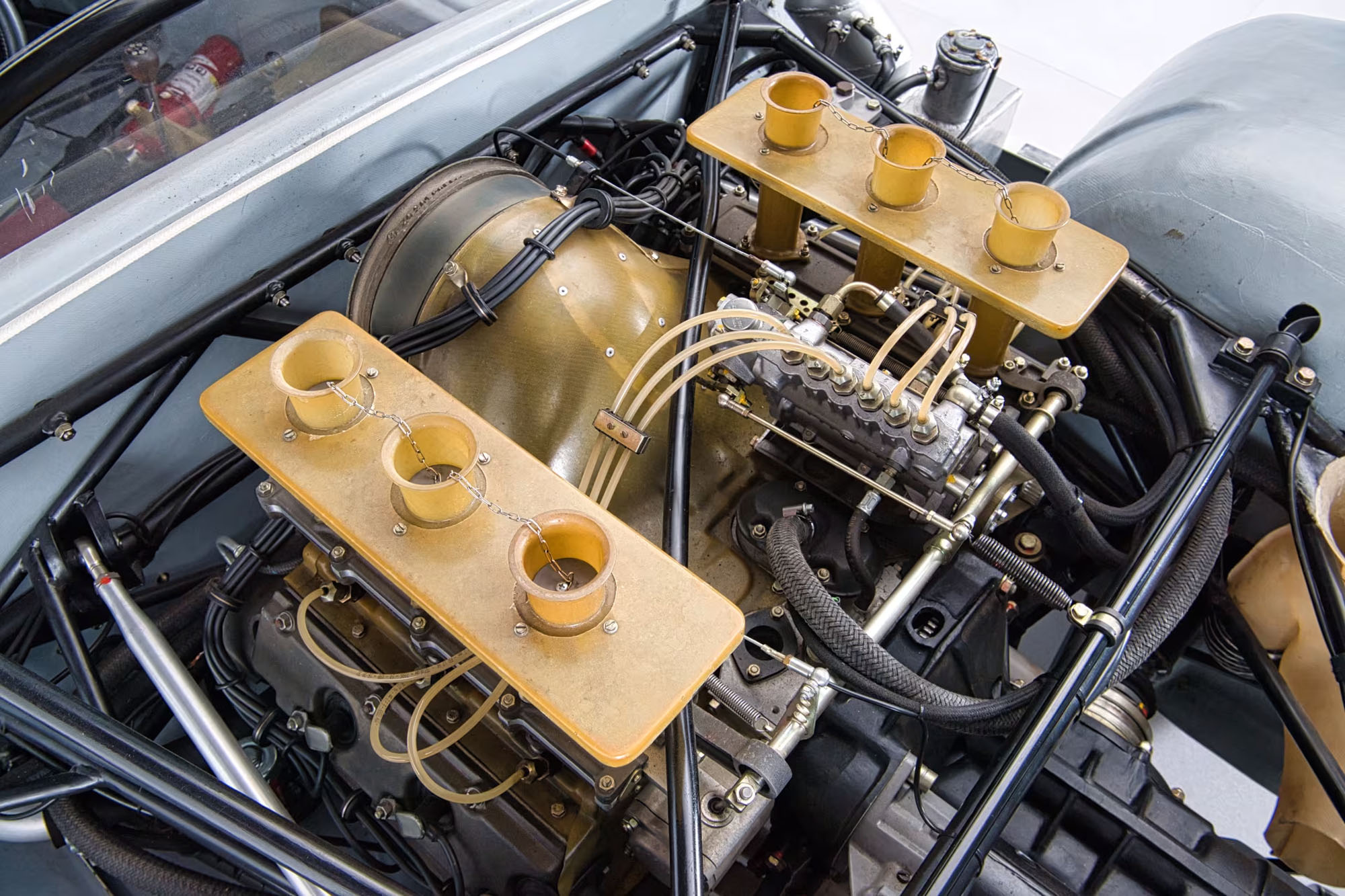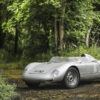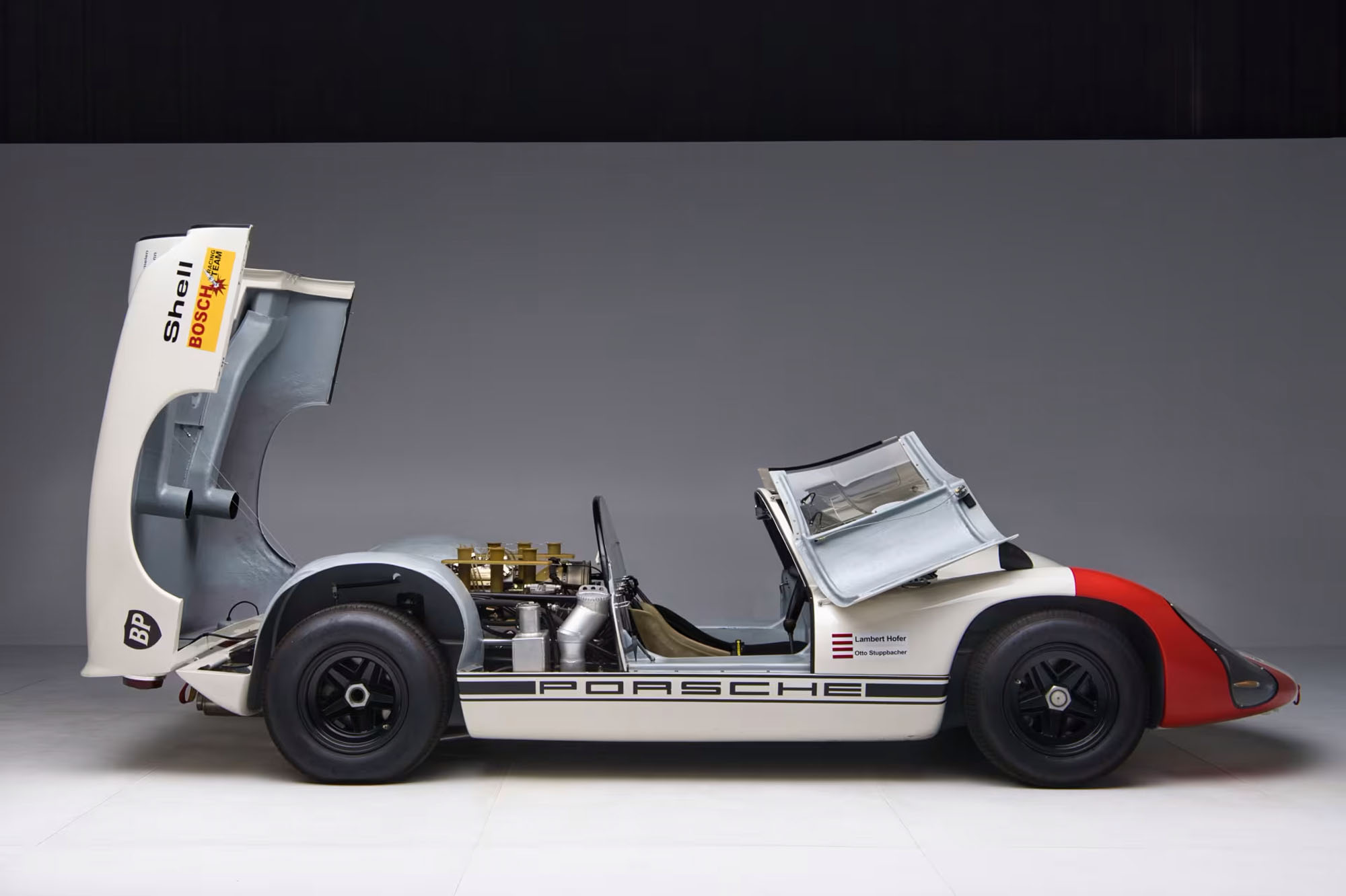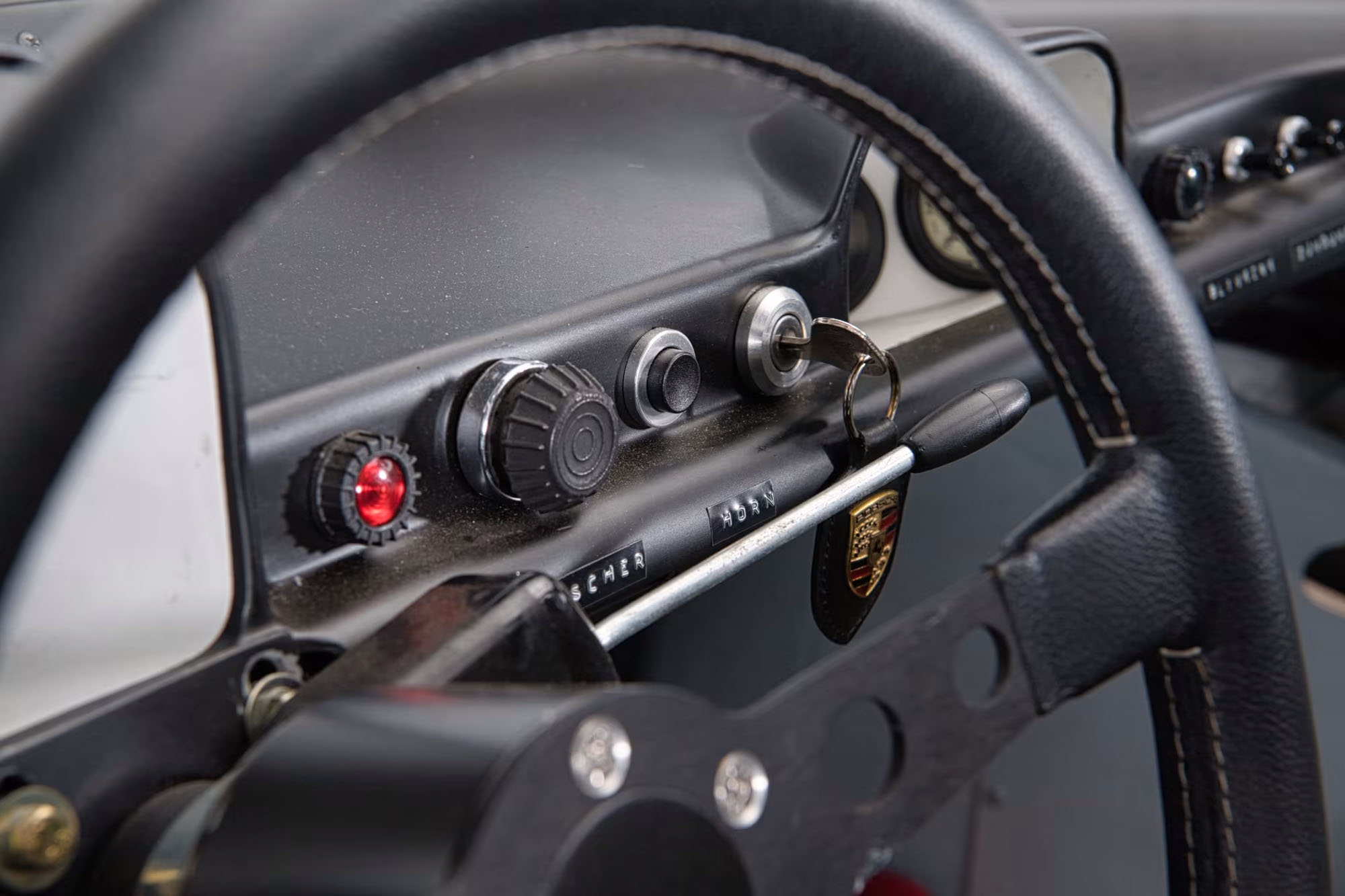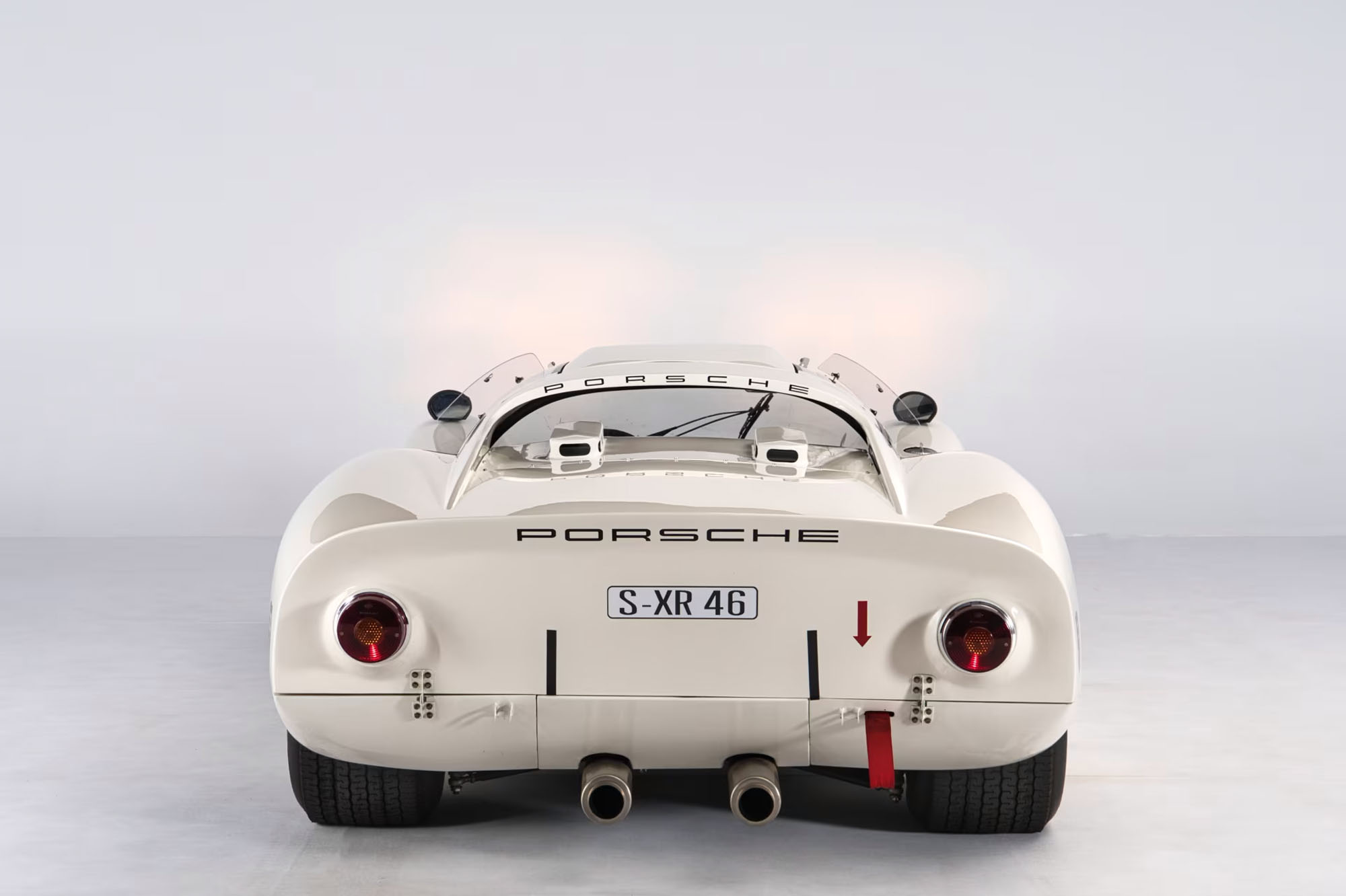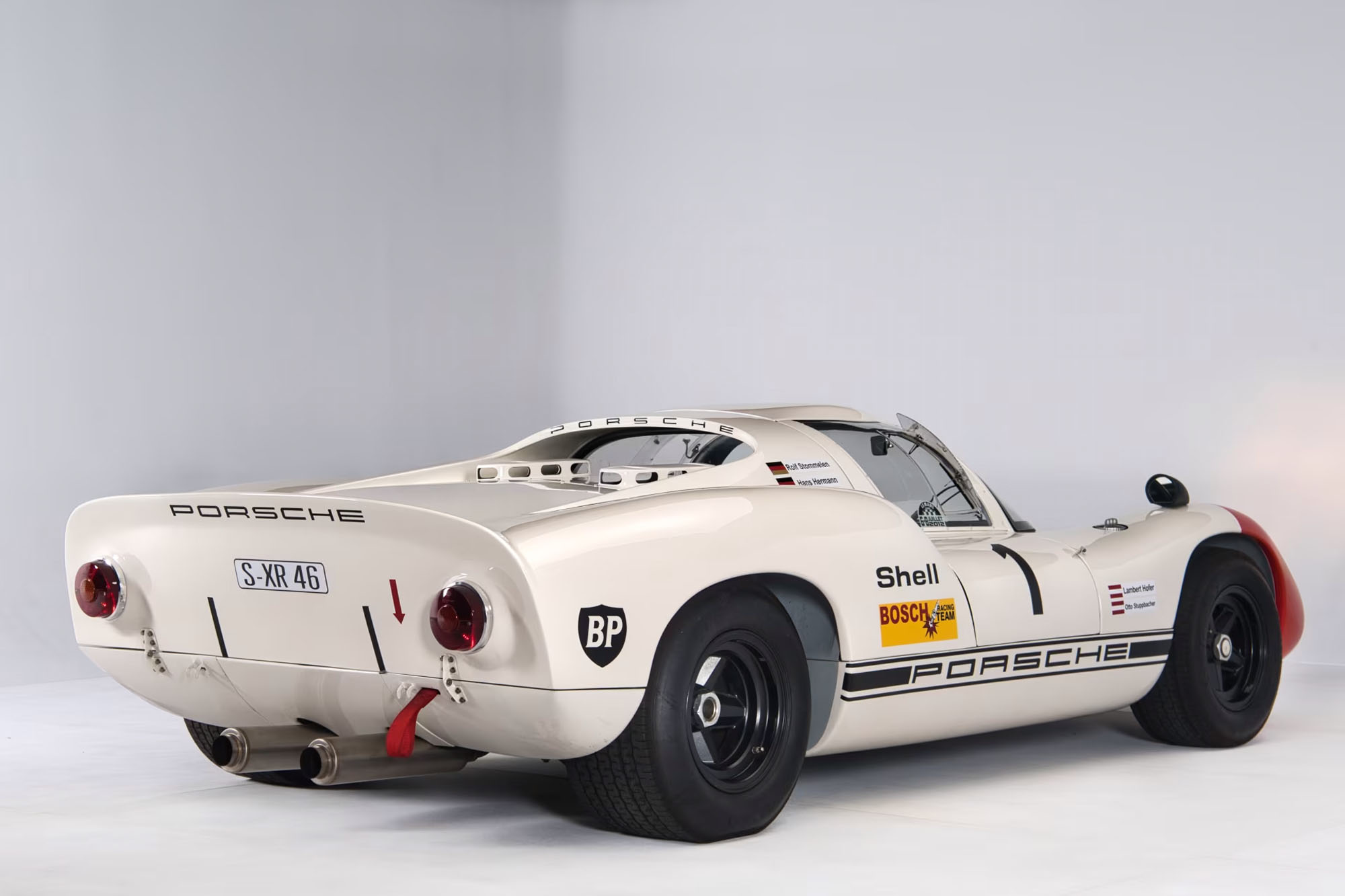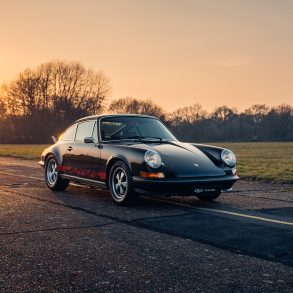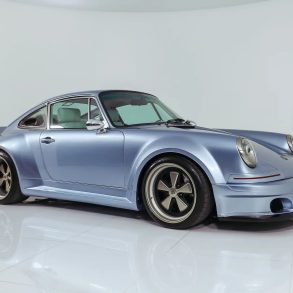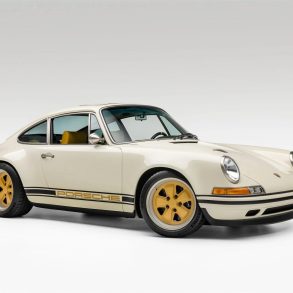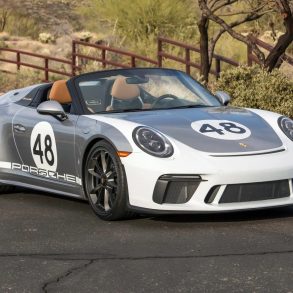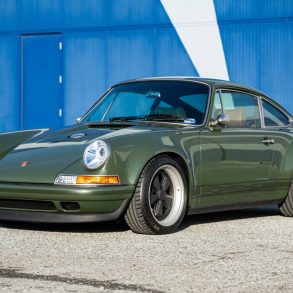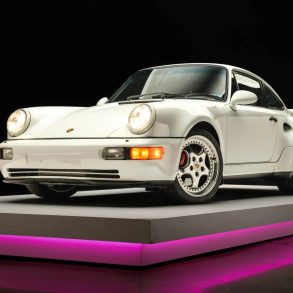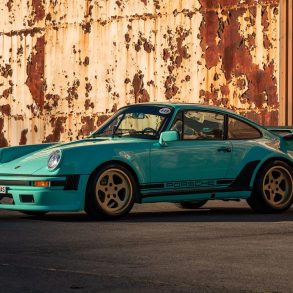Background
From its inception in 1948, Porsche has continued to signify excellence in all aspects of the design and engineering of its automobiles. Racing success was immediate, with early victories scored in circuit races, hill climbs, and rallies across Europe, including an electrifying class win at the 1951 edition of the 24 Hours of Le Mans. While Porsche’s Type 356, 356 Speedster, 550 Spyder, Carrera GT, and their derivatives were indeed very successful on both sides of the Atlantic throughout the 1950s and early 1960s, the quest for overall victory at Le Mans drove Ferdinand Piëch and his experimental department, led by Hanz Mezger, to design and develop ever-more specialized Porsche models ranging from the 904/Carrera GTS—likely the company’s last true road/track car—to the 906/Carrera 6 by 1965.
Hill Climbs
European Berg (mountain) hill climbs, including Porsche, were a particularly prestigious and hotly contested arena for many marques during the 1950s and 1960s. The highly experimental and all-out ethos of these popular events inspired Piech and his engineers to develop a ferocious, lighter-weight offshoot of the 906, dubbed the “Ollon-Villars” Spyder, named after the formidable Swiss hill climb event of the era. Further intensive development of this record-setting car, numbered 906-010, soon begat its 910 successors, with its model designation believed to be a simple three-digit contraction of the Ollon-Villars car’s chassis number.
Improvements over the 906
Combining the best and latest thinking in hill climb, Formula 1 Grand Prix, and sports racing car design, the 910 can be considered the ultimate expression of the 906 with its much-stiffer tube frame and aggressively lowered weight. Thoroughly redesigned suspension components, exotic lightweight materials and revised geometry took full advantage of wide F1-style, 13-inch diameter, quick-change, center-lock wheels yielding reduced unsprung weight with maximum road contact. Initially, Porsche’s Type 901 2.0L flat-6 racing engine delivered power, with fuel injection soon used for some 220 HP, or roughly 111 HP per liter. A 5-speed synchromesh rear transaxle housing a limited-slip differential was used. Porsche’s more complex 2.0L (Type 771) flat-8 racing engine mill was later added to some examples of the 910.
Early Success
True to plan, the 910 was highly victorious from the start, used exclusively during 1966 for the European Hill Climbing Championship. Deployed for endurance races and rallies with 6- and 8-cylinder engines in 1967, the 910 was directly competitive to, and more successful than, Ferrari’s V-6 Dino 206 P and a startling opponent to Ford’s larger and much more powerful 7.0L GT40. Porsche’s 910 wins for 1967 included the 1967 Targa Florio and a stunning 1-2-3 podium sweep (all 6-cylinder entries) for Porsche’s first overall win at the Nürburgring 1000. While the 910’s racing career with the factory was quite short, it was a big contributor to the many successes of 1967—the best in Porsche’s history to that time.
Just 12 Porsche 910s were produced with the “short tail” body style, with all examples campaigned exclusively by Porsche’s “works” Porsche System Engineering team for 1966-67. This 1966 Porsche 910, Chassis 910-001, is one of those 12 in the short tail body style. Subsequently, the factory 8-cylinder cars were refitted with the potent and reliable 6-cylinder, 901-derived mill before being sold on to private teams for a second life in front-line competition, which for some 910s continued well into the 1970s. All survivors carry fascinating histories, including those used in the period by many of the era’s finest and fastest drivers.
Porsche 910-001 carries especially compelling provenance as the first of the series produced. Since it was initially a hill climb racer, 910-001 was officially registered in Germany, an important consideration for today’s collectors and vintage racers. At a press presentation at Hockenheim, 910-001 was photographed with top Porsche officials, including Dr. Ferry Porsche, Ferdinand Piech, and Hans Mezger. Given its “first-of-line” status and importance to Porsche’s racing program, this image of 910-001 was subsequently published in the April 1968 edition of Christophorous, Porsche’s official magazine, which also celebrated Porsche’s growing roster of top international drivers.
Highlights
- The first Porsche 910 produced, chassis no. 910-001
- Driven by 3-time Formula 1 World Champion Niki Lauda at the 1969 Österreichring 1000-kilometer race
- Driven by Porsche works driver Hans Hermann at a 1968 Italian Hill Climb
- Also driven by Rudi Lins, Rolf Stommelen, Otto Stuppbacher and Lambert Hofer
- Known ownership history, including Lambert Hofer
- Meticulous restoration to exacting specifications
- 1 of 12 short tail Porsche 910s produced
- 1 of 6 Porsche 910s registered for road use
- Fiberglass bodywork
- Original 2.0L fuel-injected Flat 6-cylinder engine
- 1 of 14 Flat 6-cylinder engines produced for a Porsche 910
- Twin spark ignition
- Original magnesium engine case
- Original central lubricated cams
- Original row pump MFI
- Original Magneti Marelli distributor
- Original slide throttles
- Correct trumpets
- Small magnesium fan
- Correct small lightweight engine shroud
- Correct small race oil filter
- Original 5-speed manual transmission
- Restored cooling rips on side of gearbox
- White exterior with Red trim and Black Porsche graphics
- Roll bar
- Targa top
- Red and Black racing seat
- Current valid FIA racing paperwork
- Original title
- FIA Historical Technical Passport
- Featured in “Christophorus” April 1968 issue
- Designed and constructed by Ferdinand Piech
- Photograph of Ferry Porsche, Ferdinand Piech and all the Porsche racing engineers standing with 901-001
- Photograph of Niki Lauda and Rolf Stommelen
- Restoration photographs
- Historic files
- Special lifting jack
- Rare service manual
Maiden Voyage
On August 28, 1966, veteran German racing legend Hans Herrmann drove 910-001 to a creditable third on its maiden outing, Switzerland’s Sierre Montagne Hill Climb, part of the Swiss Mountain Grand Prix. 910-001 does not appear to have been racing for 1967, and it was sold to Porsche Works driver Rudi Lins. Since Lins officially registered the car in Austria, 910-001 was duly issued its corresponding Einzelgenehmigung (registration) document. He drove 910-001 in the 1968 edition of the 12 Hours of Sebring, where it was entered by the Swiss Valvoline Oil Company and co-driven by Lins and Karl Foitek but suffered an accident and did not finish. Next, on April 25, 1968, 910-001 finished fourth overall and first in class (P2.0) at the Monza 1000 Kilometers with co-drivers Gerhard Koch and Lins, who again teamed up with 910-001 at the May 1968 Spa 1000 Kilometers, finishing fifth overall and first in class (P2.0) under Porsche sponsorship. Its next outings were on June 9 and August 11, 1968, both at Hockenheim, with Foitek driving but with final results unknown today. On August 18, 1968, Gerhard Koch piloted 910-001 to fourth at Wunstorf, followed by another race by Koch on August 25, this time to a seventh-place finish at the Zeltweg 500 kilometers. Ending the 1968 racing season on October 6, Lins finished fifth with 910-001 at Aspern.
Success proved more elusive for 910-001 in 1969, with the car raced by Richard Gerin at Zeltweg on July 27, followed on August 10 by the Zeltweg 100 Kilometers race with Gerin sharing driving duties with Helmut Marko to an eighth-place finish. For today’s racing fans, a highlight of the 1969 racing season came when 910-001 was co-driven by its then-owner Otto Stuppacher and a young Niki Lauda, the eventual three-time Formula 1 World Champion who was granted a one-off ride in the Porsche under Bosch Racing Team racing sponsorship. Driving two stints each, Stuppacher and Lauda finished ninth in class and 21st overall. Notably, the race was the first for Porsche’s eventual Le Mans-winning 917, the first full international racing meet at Austria’s Österreichring, and the final round of the International Championship of Makes for 1969. Non-championship outings with Gerin driving included the August 17 Swedish GP with a ninth-place finish and fourth on August 24 at the (country-ish) GP Jyllandsringen.
Racer Lambert Hofer
Next, Bosch-sponsored driver Lambert Hofer acquired 910-001 and closed out 1969 with 10th place at the Salzburgring, a DNF at the Hessenreis Hockenheim and sixth in class at Neubiberg. Hofer continued to campaign 910-001 extensively through 1970 in the UK, races in the UK, Belgium, Austria, Germany, Italy and European Interserie events. Three Top 10 finishes were earned by the aging, but still-competitive 910 with Hofer during the 1970 season at the RAC Snetterton race (fourth), Zolder 500 Kilometers (fifth) and the Salzburgring European 2-Litre Championship series race (eighth). Subsequent owners campaigned 910-001 on a more limited basis, including Georg Koltay (1971), Walter Proebst (1971) and Hans Deffland (1973). Its current owner acquired it in 1994 and commissioned its meticulous restoration to exacting specifications and workmanship.
Extremely Rare
In addition to its “first of line” status, successful works and privateer racing history, and known provenance from new, Porsche 910-001 is one of 12 short-tail Porsche 910s produced, one of 14 flat 6-cylinder cars produced, and one of just six Porsche 910s registered for road use. Porsche racing legend Rolf Stommelen is also understood to have driven 910-001, confirmed by a color photograph on file of him and Niki Lauda with the car.
Sporting its sleek and lightweight fiberglass bodywork, 910-001 is a study in correctness and originality, retaining its original 2.0L fuel-injected flat 6-cylinder engine. Irreplaceable details include the competition twin-spark ignition and the original magnesium engine case, original central lubricated cams, original row pump MFI system, original Magneti Marelli distributor, original slide throttles, plus correct fuel-injection trumpets, a small magnesium fan, correct small lightweight engine shroud and correct small race oil filter. The rear transaxle includes the original 5-speed manual transmission, including restored cooling ribs on the side of the gearbox.
Featuring a white exterior finish with red trim and black Porsche graphics, 910-001 includes a roll bar, removable targa roof panel and a red and black racing seat. Mechanical features include new driveshafts, titanium suspension uprights, exotic beryllium disc-brake rotors and wide Dunlop racing tires on 13-inch racing wheels originally designed for the 1960s-era Porsche Formula 1 cars. Allowing use on classic tours and rallies, the 910 is presently fitted with custom-made exhaust silencers; however, the original race pipes are included with the sale of 910-001.
Extras
Exceptional documentation accompanies the offering of 910-001, in addition to the many print and online sources covering the 910 and 910-001 in particular, including the current FIA Historical Technical Passport (valid to December 31, 2029). Other desirable items include the original title, a photograph of Niki Lauda and Rolf Stommelen, restoration photographs, historic files, a special lifting jack and a rare service manual. Offered from 30 years of highly knowledgeable, single-owner care, Porsche 910-001 is a thrilling offering on all counts. Highly effective and successful in its own right, this classic Porsche warrior also stands as an important evolutionary link to the mighty Porsche 917s that scored overall victory at the 24 Hours of Le Mans in 1970 and 1971 and utterly dominated North American Can-Am racing in 1972-73.
Equipment Notes
- New driveshafts
- Titanium uprights
- Exhaust silencers fitted
- Original race pipes included
- Beryllium brake discs
- 13-inch racing wheels originally designed for the 1960s-era Porsche Formula 1 cars
- Dunlop racing tires
Auction Information
Above content © 2024 Mecum Auctions, reviewed and edited by Rex McAfee


